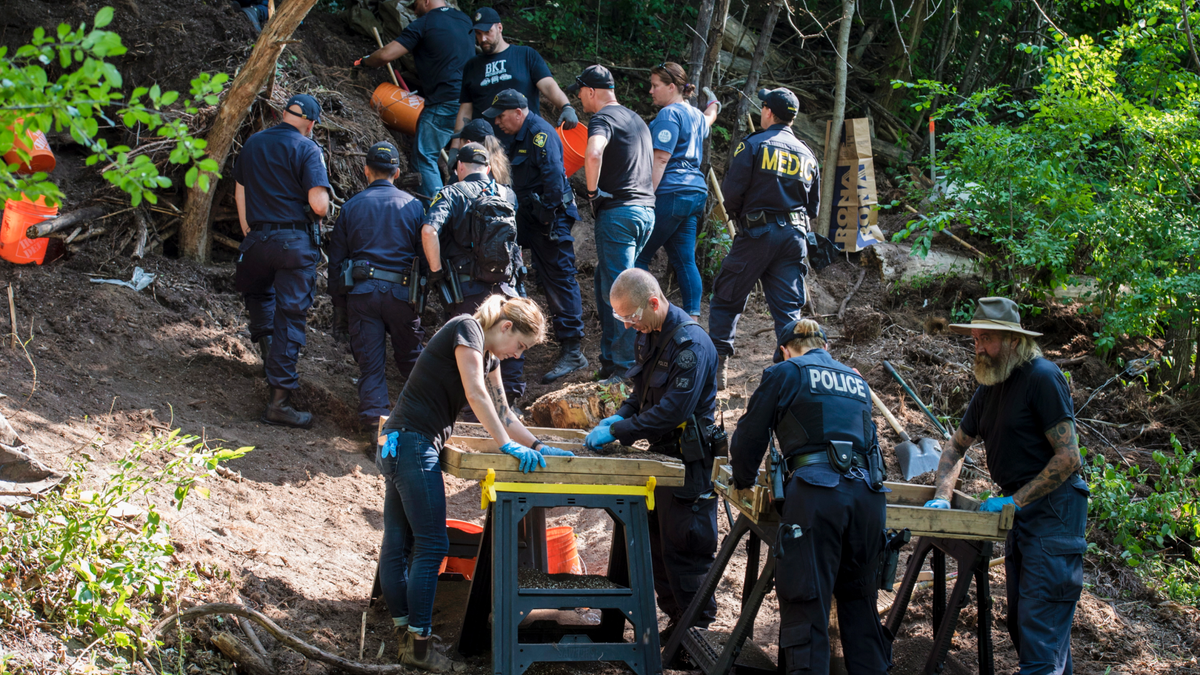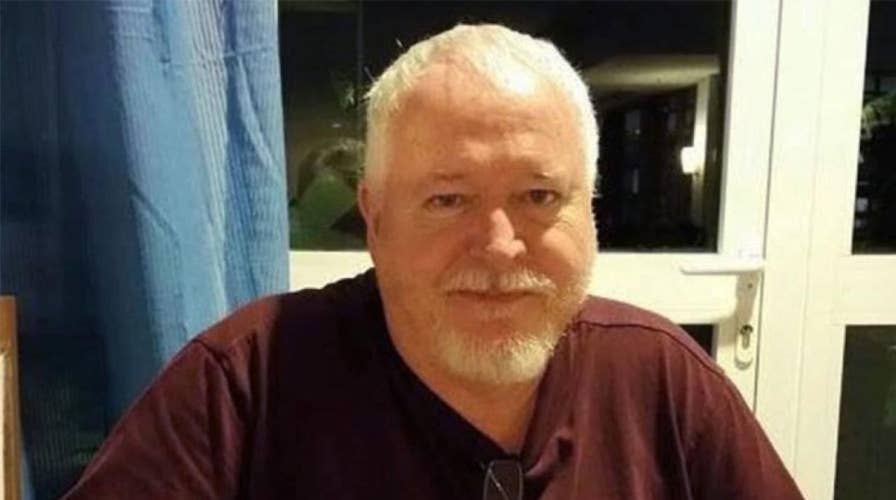Canadian serial killer dressed corpses up for series of morbid photographs
The Canadian serial killer responsible for murdering eight men in the Toronto area dressed his deceased victims in fur coats and placed cigars in their mouths for a series of morbid, staged photographs, a prosecutor has revealed as his sentencing hearing is set to resume Tuesday.
The Canadian serial killer responsible for murdering eight men in the Toronto area dressed his deceased victims in fur coats and placed cigars in their mouths for a series of morbid, staged photographs, a prosecutor has revealed as his sentencing hearing resumes Tuesday.
Bruce McArthur, arrested in early 2018, pleaded guilty last week to eight counts of first-degree murder after sexually assaulting, killing and dismembering men he met in Toronto's Gay Village district over seven years. Their bodies, prosecutors say, were then hidden in large planters at a home that McArthur used for his landscaping business. A sentence is expected to be announced this week and McArthur could face life in prison with no chance for parole for 25 years or more.
"Victims were posed naked, with cigars in their mouth, shaved, and/or made to wear a fur coat and hat," prosecutor Michael Cantlon told a court on Monday during the first day of the hearing.
The prosecution did not display the images found on McArthur's electronic devices during the session, but said they included after-death photos of six of the eight victims. Cantlon added that McArthur would later access some of the photos long after the killings.

In this July 5, 2018, file photo, members of the Toronto Police Service excavate the back of a property in Toronto during an investigation in relation to Bruce McArthur. (AP/The Canadian Press)
The serial killer appeared motionless as Cantlon went through the grisly details during Monday’s hearing, according to the Toronto Star. On Tuesday, family and friends of the victims and community organizations are expected to deliver statements, according to Global News.
Investigators found McArthur had a USB drive that contained a directory with nine subfolders — eight for the men he killed and the ninth for the man found handcuffed to a bed when they raided McArthur's home on the day of his arrest, Cantlon said Monday.
He noted that police moved in when they realized McArthur had someone over. The man, who survived, was identified only as Middle Eastern and was named "John."
DIGS OF LARGE PLANTERS UNCOVER REMAINS OF MCARTHUR'S VICTIMS
McArthur has pleaded guilty to killing Andrew Kinsman, Selim Esen, Majeed Kayhan, Dean Lisowick, Soroush Mahmudi, Skandaraj Navaratnam, Abdulbasir Faizi and Kirushna Kanagaratnam.
The victims fit a pattern: Most were of Middle Eastern or South Asian descent and lived on the margins of Canadian society, with their disappearances attracting little attention.
"Many of the victims had ties to Toronto's LGBT village and had a social life within that community. Many met or corresponded with Mr. McArthur through dating apps," Cantlon said. "Some were forced to live parts of their life in secret because of their orientation. Some lacked stable housing."
"There is evidence that Mr. McArthur sought out and exploited these vulnerabilities to continue his crimes undetected," the prosecutor said.

Officials say they found human remains on a property connected to Bruce McArthur, an Toronto-area serial killer. (Toronto Police)
Police narrowed a list of suspects in the case after seeing surveillance video of the last victim, Kinsman, enter a red Dodge Caravan in 2017. They later linked that vehicle to McArthur and found Kinsman's blood and semen in it after McArthur sold it to a wreck yard.
Photos in McArthur's devices showed he had known Kinsman at least a decade. Investigators found Kinsman's calendar with an entry titled "Bruce'" dated June 26, 2017 — the day he disappeared.
In December of that year, police searched McArthur’s home and found devices with more than 100 photos of Kinsman dating back to 2007, but 18 of them were taken while he was dead, the Toronto Star reports. Forensic examiners determined Kinsman died from strangulation.
McArthur, in his first police interview following his arrest, claimed he last saw Kinsman in December 2016, the newspaper added.
FORMER LANDSCAPER, 67, PLEADS GUILTY TO MURDERS OF EIGHT MEN TIED TO TORONTO'S GAY VILLAGE
“When he was missing, I’d lie awake at night, wondering where he was and what he might have suffered,” his sister, Karen Coles, was quoted as saying in the courtroom. “Now, I lie awake and think about how he was murdered and dismembered by someone he knew.”
McArthur, now 67, moved to the Toronto area around 2000 and previously lived in a suburb where he was married, raised two children and worked as a traveling salesman of underwear and socks.
His landscaping business was small, but he periodically hired workers, including a 40-year-old man who disappeared in 2010.
One of his victims hid the fact that he was gay from his Muslim family. Another was a recent immigrant with a drug problem. Another was a refugee who was ordered deported. Another alleged victim was homeless, smoked crack cocaine and worked as a prostitute.

In this artist's sketch, serial killer Bruce McArthur, center, attends his sentencing hearing in Toronto on Monday.
But then Kinsman vanished. The 49-year-old LGBQT activist and former bartender in Toronto had many friends. When he suddenly disappeared the day after Toronto's gay pride parade, his friends noticed quickly, and so did the police, who set up a another task force to look into disappearances in the Gay Village.
"For years, members of the LGBT community in Toronto believed they were being targeted by a killer," Cantlon said. "They were right."
Cantlon said most of the killings were facilitated under the pretense of sex. He said McArthur repeatedly strangled his victims with rope.
The prosecutor said McArthur shaved victims after he killed them and kept some hair stored. He also held onto items belonging to them.
The court also heard that police had arrested McArthur in 2016 for assault after he attempted to strangle a man he had known. The man escaped and called police. "He was unable to swallow properly again for a week," Cantlon said. But police never filed any charges, finding McArthur's police statement to be credible.
McArthur also was convicted of assault 2003 after he hit a man on the head with a metal bar, but in 2013 he obtained a record suspension from the Parole Board of Canada. By then he had committed three of the eight murders undetected.
Cantlon said McArthur has shown some remorse by pleading guilty to the charges. He said there is no evidence McArthur has murdered anyone else.
In victim impact statements delivered already, friends and family spoke of a lack of sleep, increased drinking, and distrust of others since the murders.
The Associated Press contributed to this report.

